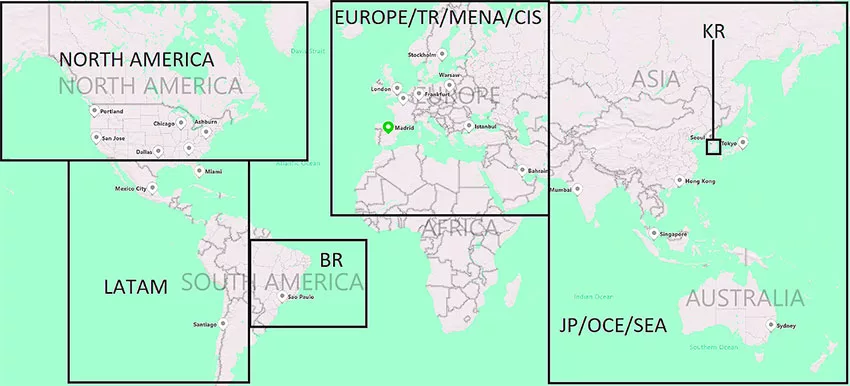The location of gaming servers is a critical factor in the gaming experience, especially for competitive online games like Valorant. The server location determines the latency or “ping” that players experience, which can greatly impact the gameplay. The spread of Valorant servers across the globe is aimed at providing an optimal experience for players in different regions.
In Europe, the Valorant servers are located in London, Warsaw, Stockholm, and Istanbul. These servers mainly cover central Europe, with Southern Europe somewhat lacking in coverage. There are no servers in Spain, Portugal, or anywhere nearby, which has been a recurring issue brought up with Riot Games.
In North America, Valorant has six servers located in Portland, San Jose, Chicago, Ashburn, Atlanta, and Dallas. These servers are evenly distributed across the region, providing broad coverage. However, it’s worth noting that Canada has a lack of servers, meaning players from Canada or Alaska must connect to either the Portland, Chicago, or Ashburn servers, which might result in higher ping times1.
In Latin America, the servers are located in Mexico City, Santiago, and Miami. Even though Miami is geographically located in the United States, the server actually serves the Latin American region. These servers are the most sparsely distributed of all, and those who wish to play Valorant or use an internet service provider in South America may face challenges unless they are near Santiago. The close proximity of the Mexico City and Miami servers relative to the size of the region poses a significant issue for the Latin American Valorant community.

The Brazilian region of Valorant has only a single server located in Sao Paulo. While the Brazilian region for Valorant is the smallest of the five main regions, it is suggested that there is room for another server. It should be noted that the Brazilian servers only appear for accounts in the account region of Brazil, so creating multiple accounts in the Brazilian region wouldn’t enable access to Valorant from a different region.
Finally, the Asian region, which also covers the Oceanic countries, has five server locations: Seoul, Tokyo, Hong Kong, Singapore, and Sydney. The Seoul server in South Korea is almost exclusively for players in the Korean region, and there is very little crossover with other regions and servers. The same is somewhat true for Tokyo in Japan. Hong Kong and Singapore are fairly spread out, but there is limited server possibility between Singapore and Sydney, especially given that Sydney is on the far coast of Australia from the Singapore server.
In conclusion, Riot Games has distributed Valorant servers globally to accommodate its player base. However, the distribution is not uniform, and some regions are better served than others. This uneven coverage can impact gameplay quality due to variations in latency, and it’s an issue that Riot Games continues to address as it expands and improves its server infrastructure.



